B plus B SmartWorx APPN551 Model APPN-TT551 Module User Manual
B&B; Electronics Model APPN-TT551 Module
User Manual
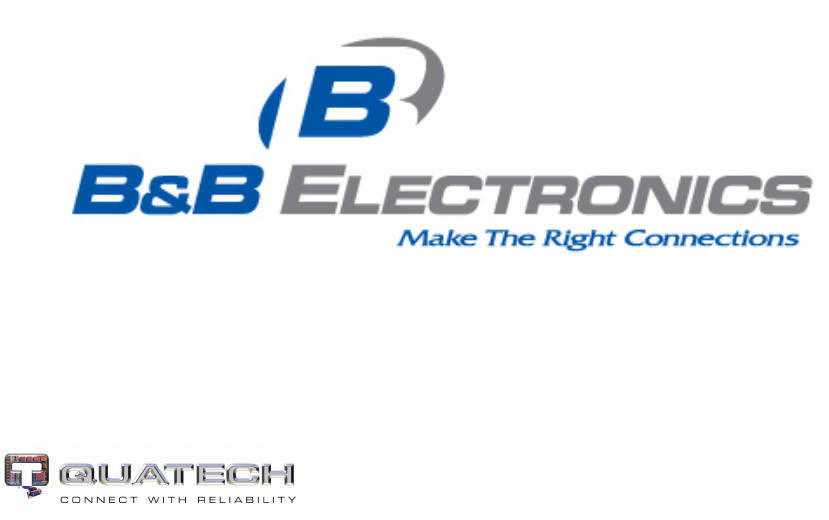
Product Specification
802.11b/g/n Advanced Enterprise Device
Server and Access Point
Revision: 1.1
May 2013

B&B Electronics, Inc. APPN-TT551 Databook
2
B&B Confidential
Copyright © 2013 B&B ® Inc.
ALL RIGHTS RESERVED. No part of this publication may be copied in any form, by photocopy, microfilm, retrieval
system, or by any other means now known or hereafter invented without the prior written permission of B&B ® Inc. This
document may not be used as the basis for manufacture or sale of any items without the prior written consent of B&B Inc.
B&B Inc. is a registered trademark of B&B Inc.
Airborne™ is a trademark of B&B Inc.
All other trademarks used in this document are the property of their respective owners.
Disclaimer
The information in the document is believed to be correct at the time of print. The reader remains responsible for the
system design and for ensuring that the overall system satisfies its design objectives taking due account of the information
presented herein, the specifications of other associated equipment, and the test environment.
B&B ® Inc. has made commercially reasonable efforts to ensure that the information contained in this document is
accurate and reliable. However, the information is subject to change without notice. No responsibility is assumed by B&B
for the use of the information or for infringements of patents or other rights of third parties. This document is the property
of B&B ® Inc. and does not imply license under patents, copyrights, or trade secrets.
B&B, Inc. Headquarters
B&B ® Inc.
707 Dayton Road
Ottawa, IL, 61350, USA
Telephone: 815-433-5100
Toll Free (USA): 888-948-2248
Fax: 815-433-5109
Technical Support: 800-346-3119 / support@bb-elec.com
Web Site: www.bb-elec.com

APPN-TT551 Databook B&B Electronics, Inc.
3
Contents
1.0 Conventions ..................................................................................................................................... 5
1.1 Terminology ................................................................................................................................ 5
1.2 Notes ............................................................................................................................................ 5
1.3 Caution ......................................................................................................................................... 5
1.4 File Format .................................................................................................................................. 5
2.0 Product Description ........................................................................................................................ 6
3.0 Model Numbers ............................................................................................................................... 7
4.0 Pin out and Connectors ................................................................................................................. 8
4.1 Digital UART Ports ..................................................................................................................... 9
4.2 Ethernet PHY Port ...................................................................................................................... 9
4.3 Serial Peripheral Interface (SPI) .............................................................................................10
4.4 Debug/Console Port ..................................................................................................................10
4.5 General Purpose Input/Output (GPIO) ...................................................................................10
4.6 Connector Definition .................................................................................................................11
5.0 Electrical & RF Specification ........................................................................................................12
5.1 AC Electrical Characteristics – Transmitter ...........................................................................14
5.2 Performance/Range ..................................................................................................................14
6.0 SPI Interface ...................................................................................................................................15
6.1 Pin-out .........................................................................................................................................15
6.2 SPI AC Characteristics .............................................................................................................16
6.3 SPI Protocol ...............................................................................................................................17
6.4 SPI Modes ..................................................................................................................................18
6.5 SPI Commands..........................................................................................................................18
7.0 Antenna ...........................................................................................................................................21
7.1 Antenna Selection .....................................................................................................................21
7.2 Host Board Mounted Antenna .................................................................................................21
7.3 Host Chassis Mounted Antenna..............................................................................................21
7.4 Embedded Antenna ..................................................................................................................22
7.5 Antenna Location ......................................................................................................................23
7.6 Performance ...............................................................................................................................23
8.0 RESET Function ............................................................................................................................25
9.0 Mechanical Outline ........................................................................................................................26
10.0 Recommended Footprint ..............................................................................................................27
11.0 Regulatory Certification and Agency Approvals ........................................................................28
11.1 FCC Statement ..........................................................................................................................28
11.2 FCC RF Exposure Statement ..................................................................................................29
11.3 Information for Canadian Users (IC Notice) ..........................................................................29
11.4 FCC/IC Modular Approval ........................................................................................................30
11.5 End Product Labeling ...............................................................................................................31
11.6 Regulatory Test Mode Support ...............................................................................................32
12.0 Physical & Environmental Approvals ..........................................................................................33

B&B Electronics, Inc. APPN-TT551 Databook
4
Figures
Figure 1 – APPN-TT551 Block Diagram ................................................. Error! Bookmark not defined.
Figure 2 - SPI Read/Write Timing ............................................................................................................16
Figure 3 - SPI Clock and Select Timing ..................................................................................................16
Figure 4 - Power on RESET Timing .........................................................................................................25
Figure 5 - RESET Timing ..........................................................................................................................25
Figure 6 – DP550 Mechanical Outline .....................................................................................................26
Figure 7 - Recommended PCB Footprint ................................................................................................27
Figure 8 - Full FCC/IC Label .....................................................................................................................31
Figure 9 - Minimum FCC/IC Label ...........................................................................................................31
Tables
Table 1 - Model Numbers ........................................................................................................................... 7
Table 2 – Module Pin Definition ................................................................................................................. 8
Table 3 - UART Pin Definition .................................................................................................................... 9
Table 4- Absolute Maximum Values1 .......................................................................................................12
Table 5 – Operating Conditions & DC Specification ..............................................................................12
Table 6 - RF Characteristics – 802.11b/g/n ............................................................................................13
Table 7 - Supported Data Rates by Band ...............................................................................................13
Table 8 - Operating Channels ...................................................................................................................13
Table 9 - Radio Typical Performance Range .........................................................................................14
Table 10 - SPI Pinout Details ....................................................................................................................15
Table 11 - SPI Signal Descriptions ..........................................................................................................15
Table 12 - SPI AC Timings ........................................................................................................................16
Table 13 - TX Message Header ...............................................................................................................17
Table 14 - RX Message Header ...............................................................................................................17
Table 15 - SPI Modes ................................................................................................................................18
Table 16 - SPI Command Description .....................................................................................................18
Table 17 - Embedded Antenna Options ..................................................................................................22
Table 18 - RESET Timing ..........................................................................................................................25
Table 19 - Regulatory Approvals ..............................................................................................................28
Table 20 - Modular Grant Numbers .........................................................................................................30
Table 21 - Mechanical Approvals .............................................................................................................33
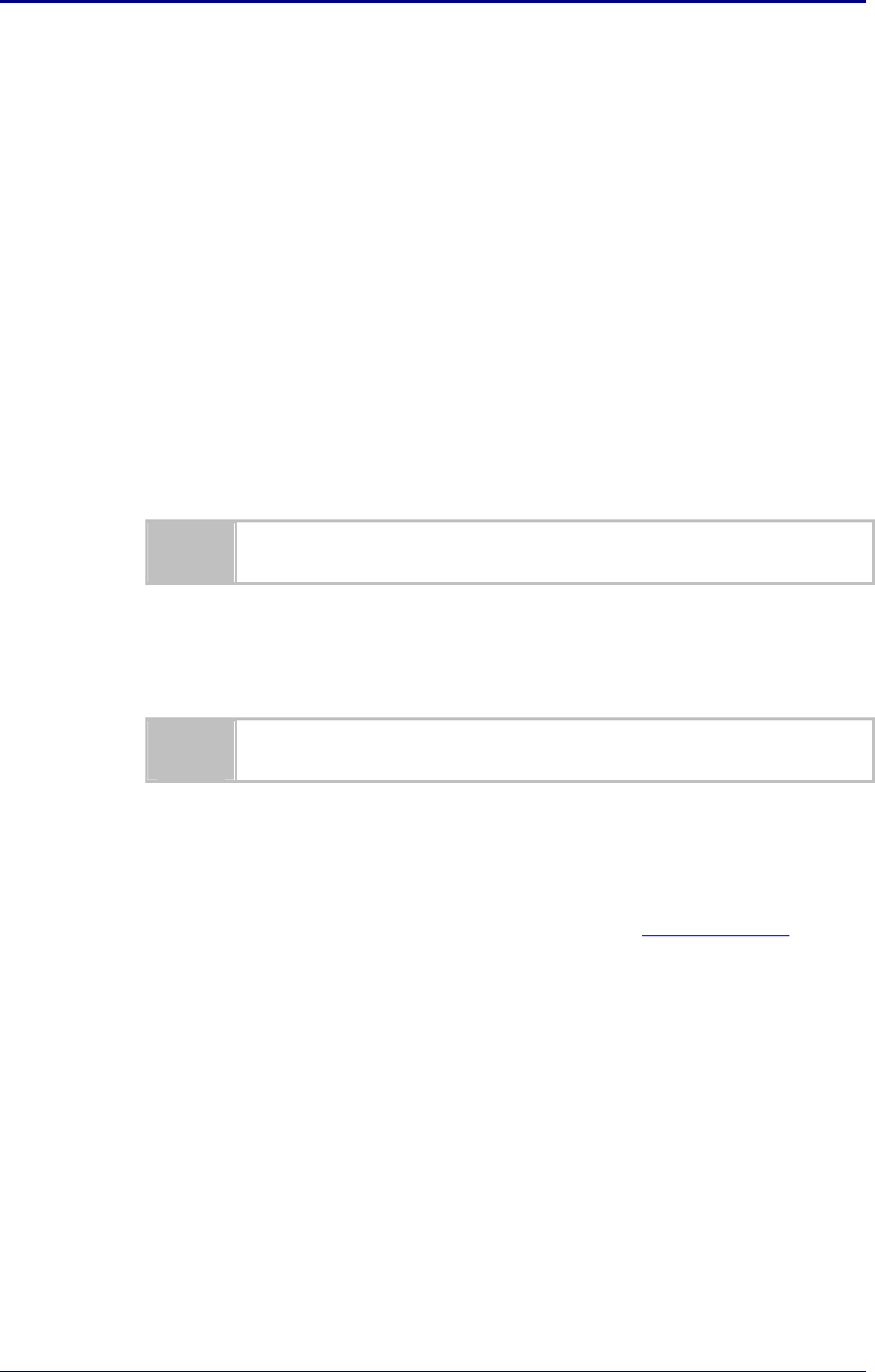
APPN-TT551 Databook B&B Electronics, Inc.
5
1.0 Conventions
The following section outlines the conventions used within the document. Where
convention is deviated from the deviation takes precedence and should be followed. If
you have any question related to the conventions used or clarification of indicated
deviation please contact B&B Sales or Wireless Support.
1.1 Terminology
Airborne Enterprise Device Server and AirborneDirect Enterprise Device
Server are used in the opening section to describe the devices detailed in this
document. After this section the term module will be used to describe the
devices.
1.2 Notes
A note contains information that requires special attention. The following
convention will be used. The area next to the indicator will identify the specific
information and make any references necessary.
The area next to the indicator will identify the specific information and make any
references necessary.
1.3 Caution
A caution contains information that -- if not followed -- may cause damage to the
product or injury to the user. The shaded area next to the indicator will identify
the specific information and make any references necessary.
The area next to the indicator will identify the specific information and make any
references necessary.
1.4 File Format
These documents are provided as Portable Document Format (PDF) files. To
read them, you need Adobe Acrobat Reader 4.0.5 or higher. For your
convenience, Adobe Acrobat Reader is provided on the Radio Evaluation Kit CD.
Should you not have the CD, go to the Adobe Web site (www.adobe.com) and
download the latest version of the free Adobe Acrobat Reader.

B&B Electronics, Inc. APPN-TT551 Databook
6
2.0 Product Description
The APPN-TT551 module is the latest generation of 802.11 wireless device servers and
adapters from B&B. The radio features the following:
o 802.11 b/g/n Wi-Fi Radio with 32bit ARM9 CPU (128/256Mb SDRAM, 64Mb
Flash)
o Atheros AR6203 802.11 b/g/n radio chipset.
o Supports Access Point, Infrastructure and AdHoc Client networks (Software
selectable)
o Access Point device includes:
Up to eight (8) simultaneous clients
WEP, WPA-PSK and WPA2-PSK security
Integrated DHCP server
Tx Power Control
MAC address filtering
o Infrastructure device includes:
Supports WEP, WPA, WPA2, 802.11i and 802.1x Supplicant, with
Certificates.
o The wireless device server includes integrated:
802.11 b/g/n radio driver
TCP/IP stack, UDP, telnet, FTP server
Data bridging and buffering
Command Line Interface
Web interface
WPA Supplicant
802.11 Radio Driver
o Operating Temperature (-40°C to 85°C)
o Storage temp (-40°C to 85°C)
o 52 Pin mini PCIe card connector
o Hirose U.FL RF connector for the antenna
o Multiple host interfaces supported:
UART (921.6K BAUD)
SPI
MII/RMII (Bridge/Router modes supported)
o No host driver required
o Small form factor module
o Worldwide Regulatory Support
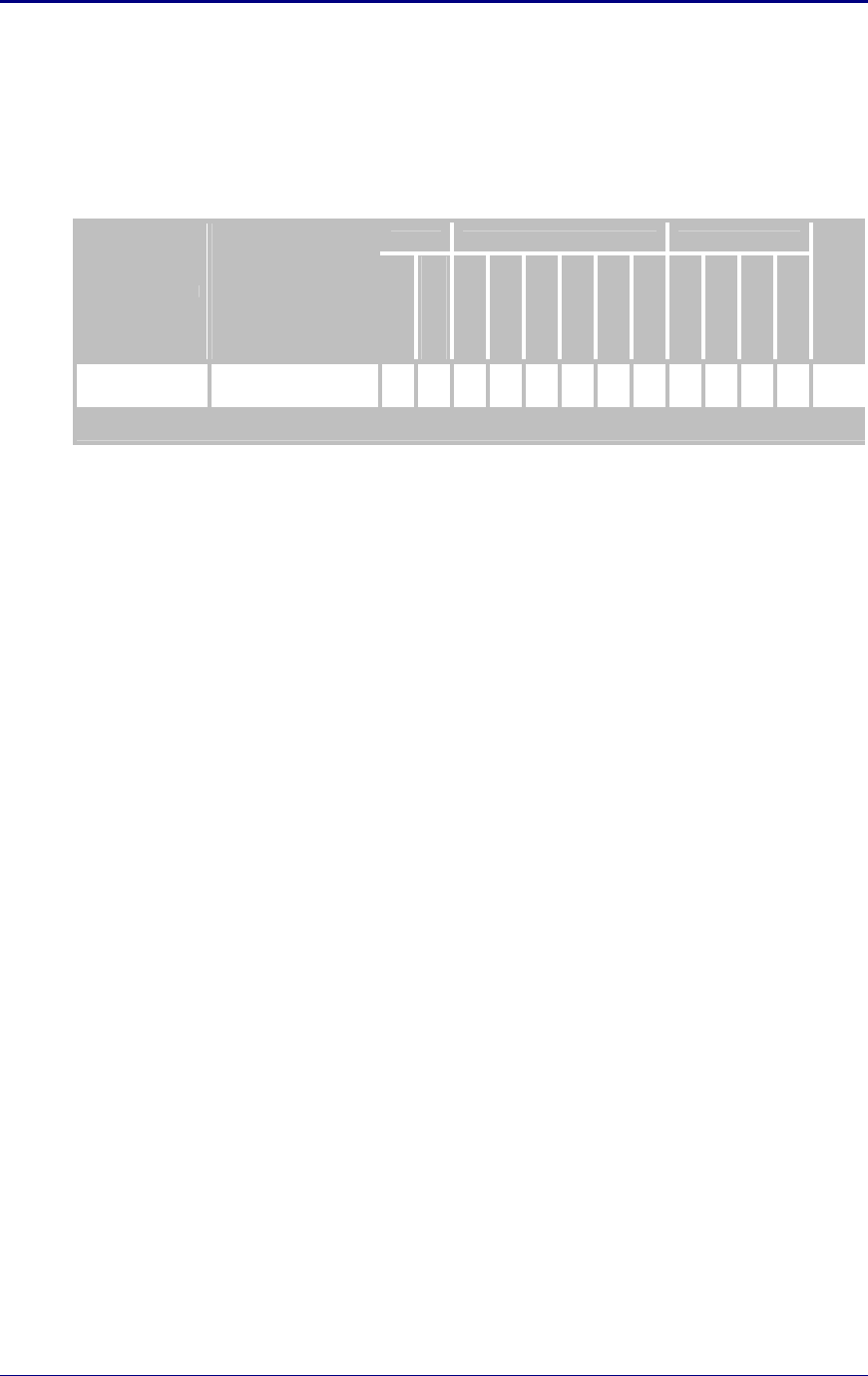
APPN-TT551 Databook B&B Electronics, Inc.
7
3.0 Model Numbers
The following table identifies the model numbers associated with the device server family.
Please contact B&B sales for details, quotes and availability.
Table 1 - Model Numbers
Model Number Description
Wi-Fi Interface Security
RoHS
802.11 b/g/n
Client
802.11 b/g/n
Access Point
UART
RS232
RS485
SPI
MII/RMII
GPIO
WEP
WPA
WPA2
802.11i
APPN-TT551 802.11b/g/n, Access Point/Client
Evaluation Kits

B&B Electronics, Inc. APPN-TT551 Databook
8
4.0 Pin out and Connectors
Pin definition is dependent upon the device type selected. The specific pin function is
defined in Table 2 for each device type. Where multiple options are available for a single
device type, these options are software selectable by the device firmware.
Table 2 – Module Pin Definition
Pin Signal Description PCIe Pin Mapping
1 VSS Ground 9,15,21,27,29,35,50,40,34,26,18,4
2 Not Used Not Used
3 DVDD Power, +3.3 V 2,24,52
4 DVDD Power, +3.3 V 2,24,52
5 Not Used Not Used
6 DBG_TXD Debug serial transmit data 30
7 #RESET
Reset active low input. A transition to high
releases the reset condition (see “Reset” in the
Data book). There is a weak pull-up on this pin.
22
8 DBG_RXD Debug serial receive data 32
9 Not Used Not Used
10 Not Used Not Used
11 #DEFAULT/LED_LINK
At boot, restore factory default active low input.
LAN link or serial connection detected LED
output. May be used as digital input or 3.3 V
CMOS-compatible digital output (VOL≤0.4, 2.4
V≤ VOH).
45
12 UART_CTS1/SPI_SEL
Primary UART clear to send input or SPI select
output
Signal is LVTTL-compatible.
36
13 LAN_RX+ LAN receive positive Not Used
14 LAN_RX- LAN receive negative Not Used
15 VSS Ground 9,15,21,27,29,35,50,40,34,26,18,4
16 VSS Ground 9,15,21,27,29,35,50,40,34,26,18,4
17 Not Used Not Used
18 UART_RTS1/SPI_CLK
Primary UART request to send output or SPI
clock input
Signal is LVTTL-Compatible.
38
19 Not Used Not Used
20 Not Used Not Used
21 Not Used Not Used
22 SRL_MODE/SPI_INT
Serial transceiver protocol select output or SPI
interrupt output (see Error! Reference source
not found.). Signal is LVTTL-Compatible.
47
23 LED_CONNECT Wireless TCP session established LED output 20
24 UART_RXD1/SPI_MOSI
Primary UART receive data input or SPI slave
data input.
Signal is LVTTL-Compatible.
51
25 LED_POST Power-on self-test LED output 44
26 LED_WLAN_CFG Wireless IP address assigned LED output 46
27 Not Used Not Used
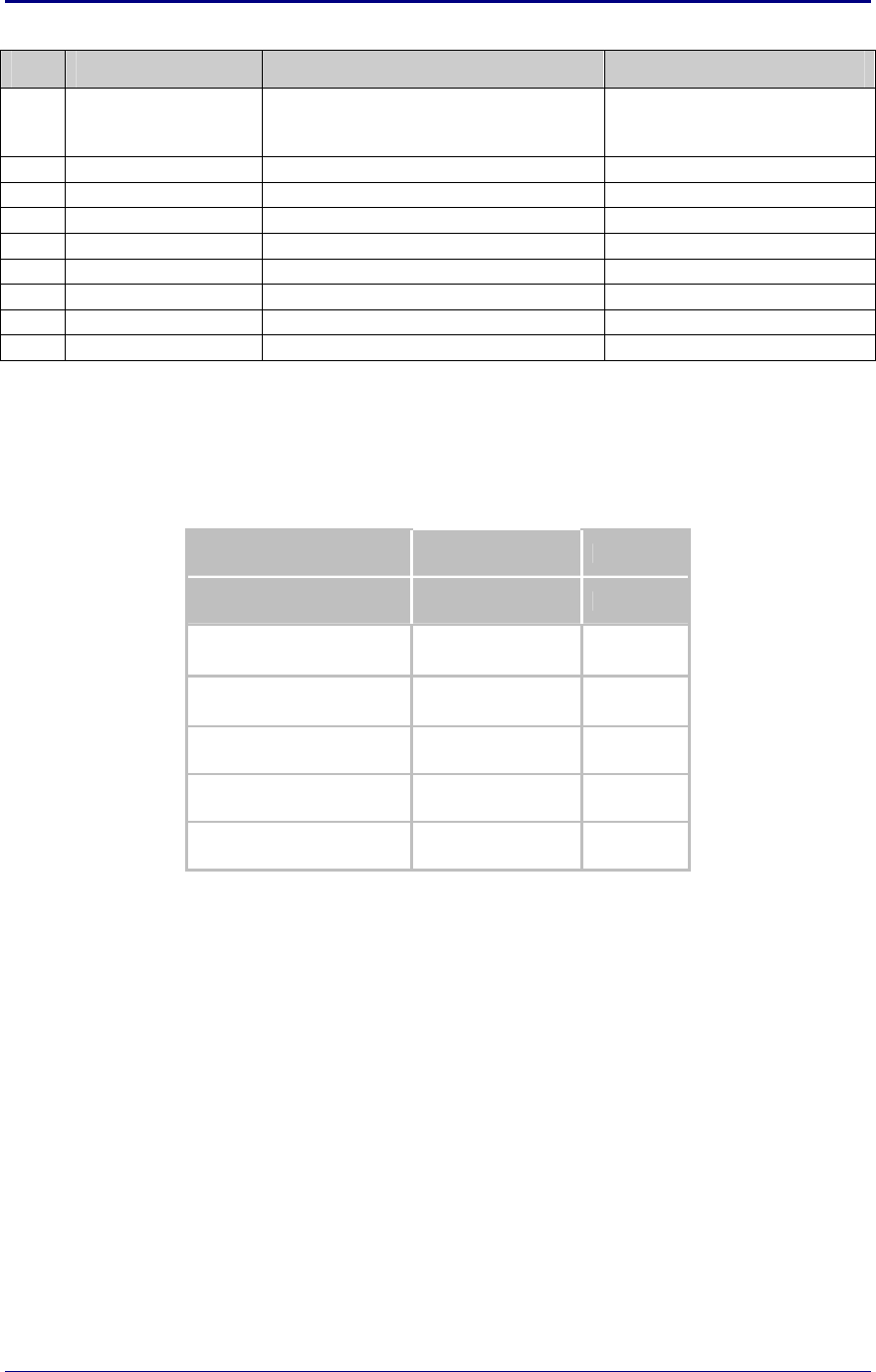
APPN-TT551 Databook B&B Electronics, Inc.
9
Pin Signal Description PCIe Pin Mapping
28 UART_TXD1/SPI_MISO
Primary UART transmit data output or SPI slave
data output.
Signal is LVTTL-Compatible.
49
29 LAN_TX- LAN transmit negative Not Used
30 LAN_TX+ LAN transmit positive Not Used
31 Not Used Not Used
32 Not Used Not Used
33 DVDD Power, +3.3 V 2,24,52
34 DVDD Power, +3.3 V 2,24,52
35 LED_#RF_ACT RF activity LED active low output 42
36 VSS Ground 9,15,21,27,29,35,50,40,34,26,18,4
4.1 Digital UART Ports
The device supports a digital UART port. Use of this port is determined by the
device type choice made in firmware. The details of the port can be seen in Table
3.
Table 3 - UART Pin Definition
Device Type UART 1 All
Pin Definition UART1 Pin Debug
Data out (DOUT) 28 6
Data In (DIN) 24 8
Clear-to-Send (CTS) 12
Ready-to-Send (RTS) 18
Serial Mode (SER_MOD)
The primary UART1 supports a 4-wire interface.
The primary digital UART1 can be used as the primary connection for the Serial
device type. Definitions of this interface can be seen in Table 3.
The UART1 interface supports the following possible configurations:
BAUD: 300, 600, 1200, 2400, 4800, 9600, 14400, 19200, 28800, 38400, 57600,
115200, 230400, 460800, 921600
Flow Control: None, Hardware (CTS/RTS), Software (XON/XOFF)
Default settings: 9600, 8, N, 1, No Flow Control.
4.2 Ethernet PHY Port
An MII/RMII 10/100 Ethernet PHY interface is supported. It is enabled by default
when the Ethernet device type is selected in firmware.

B&B Electronics, Inc. APPN-TT551 Databook
10
4.3 Serial Peripheral Interface (SPI)
Please refer to section 6.0 for details on this interface.
4.4 Debug/Console Port
A debug/console port is supported by a 2-wire serial interface defined in Table 3.
This port is a bi-directional serial port intended for debug of the unit only. It does
not support data transfer.
It is recommended that a connection to this port be supported via test points or a
two pin header. The default settings for the debug port are 115200, 8, N 1, No
Flow Control.
CAUTION: Do not use the debug port without contacting B&B Technical Support
first. Potential damage to the module may occur.
4.5 General Purpose Input/Output (GPIO)
A number of the interface pins support multiple functional definitions. Those
alternately defined as GPIO pins can be selected as such via device firmware.
The GPIO pins are digital I/O capable of supporting up to an 8mA drive current at
3.3VDC.

APPN-TT551 Databook B&B Electronics, Inc.
11
4.6 Connector Definition
There are a total of three connectors to the radio:
CN1: 52 pin Mini PCIe form factor
ANT1: RF connector for 802.11b/g/n antenna.
Hirose U.FL
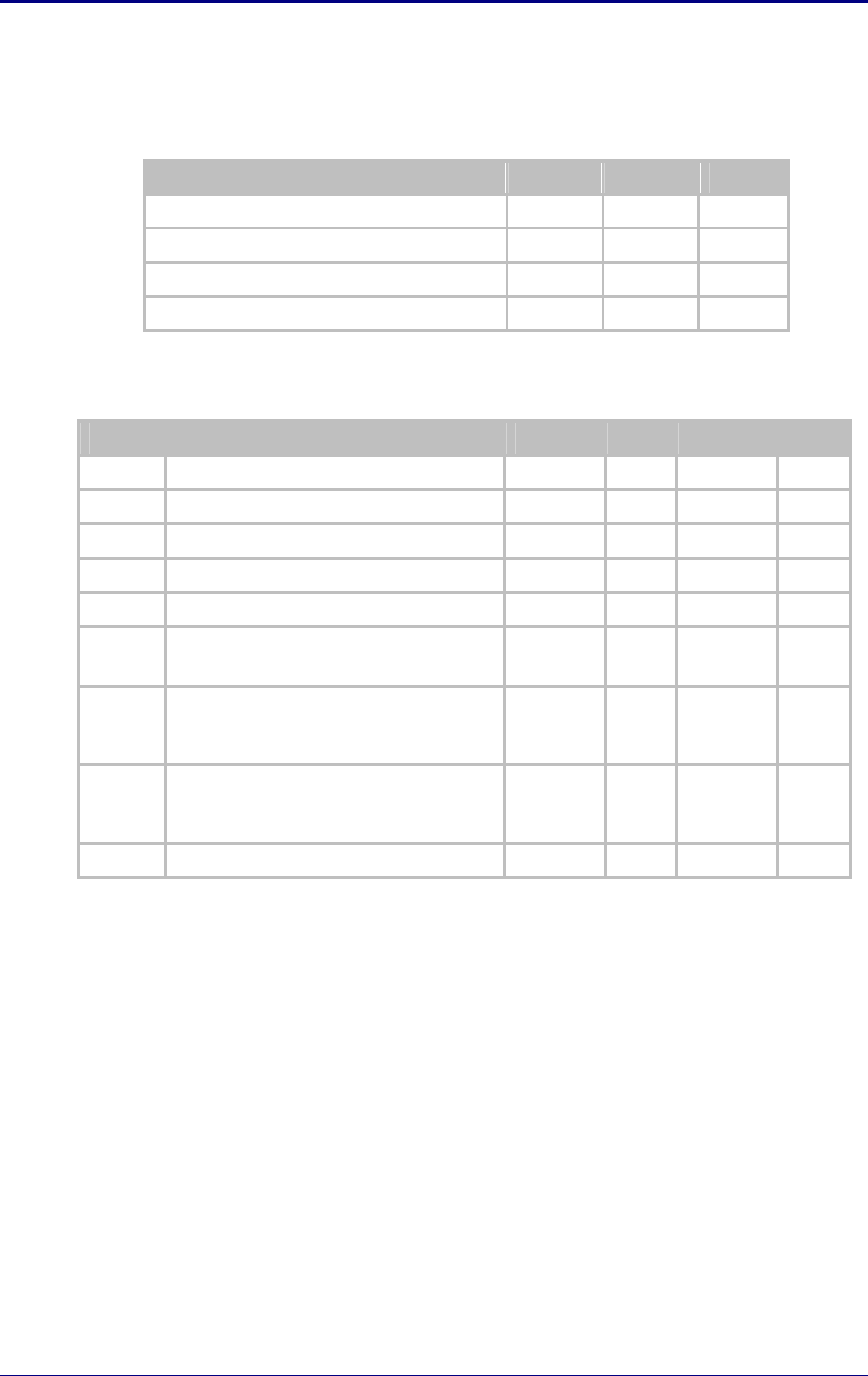
B&B Electronics, Inc. APPN-TT551 Databook
12
5.0 Electrical & RF Specification
Table 4- Absolute Maximum Values1
Parameter Min Max Unit
Supply Voltage -0.5 3.6 VDC
Power Dissipation 2.00 W
Operating Temperature Range -40 85 oC
Storage Temperature -40 85 oC
Note: 1. Values are absolute ratings, exceeding these values may cause permanent damage to the device.
Table 5 – Operating Conditions & DC Specification
Symbol Parameter Min Typ Max Units
VDD Supply Voltage 3.14 3.30 3.60 V
VIL Input Low Level Voltage -0.3 0.8
VIH Input High Level Voltage 2.0 VDD + 0.3
VOL Output Low Level Voltage 0.4
VOH Output High Level Voltage VDD - 0.4
IIR Inrush current
400µs duration
1500 mA
ICCG Operating Current – UART Data (802.11g)
Connection Rate @ 54Mb/s
UART 100% Duty Cycle @ 920K BAUD
320 mA
ICCB Operating Current – UART Data (802.11b)
Connection rate @ 11Mb/s
UART 100% Duty Cycle @ 920K BAUD
430 mA
ICCU Radio and CPU on. No data traffic (UART) 190 mA

APPN-TT551 Databook B&B Electronics, Inc.
13
Table 6 - RF Characteristics – 802.11b/g/n
Symbol Parameter Rate (Mb/s) Min Average
dBm / mW
Peak
dBm / mW Units
POUTB Transmit Power
Output 802.11b 11, 5.5, 2, 1 15.0 31.6 dBm
POUTG Transmit Power
Output 802.11g
6, 9, 12, 18, 24,
36, 48, 54 12.6 18.2 dBm
PRSENB
Receive
Sensitivity
802.11b
11 -86
dBm
1 -92
PRSENG
Receive
Sensitivity
802.11g
54 -72
dBm
36 -78
18 -84
6 -89
FRANGEBG
Frequency
Range
802.11b/g
2401 2495 MHz
Table 7 - Supported Data Rates by Band
Band Supported Data Rates (Mb/s)
802.11b 11, 5.5, 2, 1
802.11g 54, 48, 36, 24, 18, 12, 9, 6
802.11n 65, 58.5, 42, 39, 26, 19.5 13, 6.5
Table 8 - Operating Channels
Band Region Freq Range
(GHz)
No. of
Channels Channels
802.11b1,2
US/Canada 2.401 - 2.473 11 1 – 11
Europe 2.401 - 2.483 13 1 – 13
Japan 2.401 - 2.495 14 1 – 14
802.11g1,2
US/Canada 2.401 - 2.473 11 1 – 11
Europe 2.401 - 2.483 13 1 – 13
Japan 2.401 - 2.483 13 1 – 13
1. Only channels 1, 6 and 11 are non-overlapping.
2. Channel 14 is non-overlapping (Japan only).

B&B Electronics, Inc. APPN-TT551 Databook
14
5.1 AC Electrical Characteristics – Transmitter
Transmit power is automatically managed by the device for minimum power
consumption. The MAXIMUM transmit power at the RF connector is typically
+15dBm ± 2 dB for all bands (b/g/n) and rates.
5.2 Performance/Range
The following table illustrates the typical data rates, performance and range that
the device is capable of providing using an omni directional antenna.
Table 9 - Radio Typical Performance Range
Data Rate
Typical Outdoor Distance
(2dBi antenna gain on each end for
B/G mode)
1.0 Mb/s 350m
11.0 Mb/s 270m
6Mb/s 802.11g 260m
54Mb/s 802.11g 104m
Ranges are based on receiver sensitivity, Transmitter power, free-space path
loss estimates, antenna gain factors, and link margin estimates. Actual range will
vary from those stated. Non line-of-sight applications will result in typical values
less than shown above.
The Data Rate is the supported connection rate for the wireless link. However,
the actual data throughput for the link will be less than the stated data rates.

APPN-TT551 Databook B&B Electronics, Inc.
15
6.0 SPI Interface
The following section details the SPI interface specification for both hardware timing and
SPI protocol. The device is a SPI slave and requires a compatible SPI master for
operation.
6.1 Pin-out
When the SPI interface is enabled, through the CLI or web interface, the
following pins are assigned for communication.
Table 10 - SPI Pinout Details
Pin Definition SPI
Master In Slave Out (MISO) 28
Master Out Slave In (MOSI) 24
SPI Interrupt (SPI_INT) 22
SPI Clock (SPI_CLK) 18
SPI Select (/SPI_SEL) 12
Table 11 - SPI Signal Descriptions
Pin Definition Description
Master In Slave Out (MISO) Serial Data OUT; must be connected to the serial data in of
the master.
Master Out Slave In (MOSI) Serial Data IN; Must be connected to the serial data out of the
master.
SPI Interrupt (SPI_INT) Interrupt signal driver by slave see Table 16 for details of
operation.
SPI Clock (SPI_CLK) SPI clock sourced from the master.
SPI Select (/SPI_SEL) Enable the SPI slave, sourced from the master. Active low
signal.
Use of the SPI interface is mutually exclusive with the use of UART1 and the
Ethernet ports, as the API interface reuses pins from both of these interfaces.
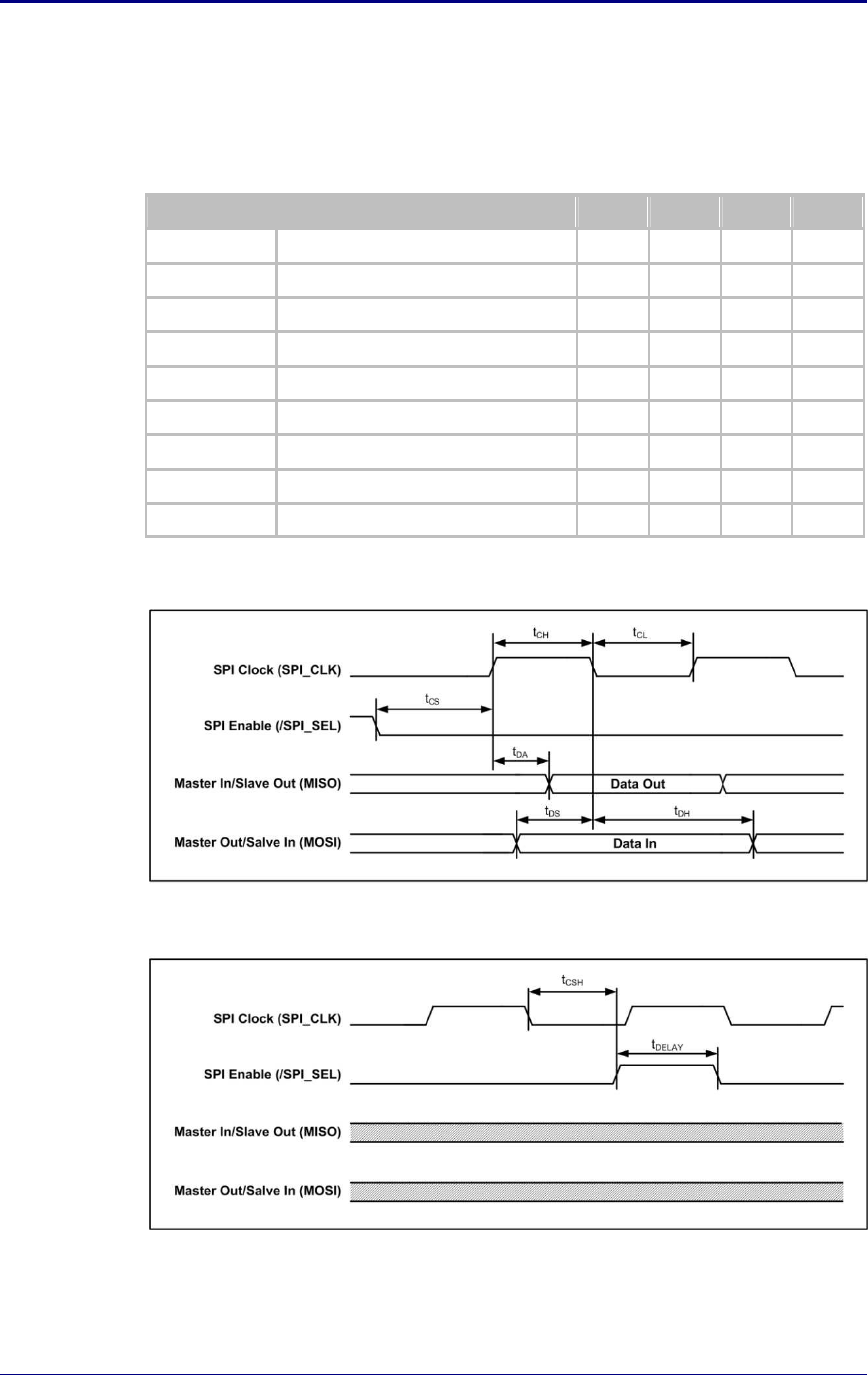
B&B Electronics, Inc. APPN-TT551 Databook
16
6.2 SPI AC Characteristics
The following specification identifies the required hardware timing to successfully
implement a SPI interface with the Airborne Device Server module.
Table 12 - SPI AC Timings
Symbol Parameter Min Typ Max Units
fMAX Maximum Clock Frequency 8.00 MHz
tCS SPI Select Low to Clock Rising Edge 100 ns
tCH Clock High 62.5 ns
tCL Clock Low 62.5 ns
tDA Clock High to Data Out 60 ns
tDS Clock Low to Data In Valid Set-up time 14 ns
tDH Clock Low to Data Valid Hold time 2 ns
tCSH Clock Falling Edge to SPI Select High 100 ns
tDELAY SPI Select High to SPI Select Low 40 µs
Figure 1 - SPI Read/Write Timing
Figure 2 - SPI Clock and Select Timing
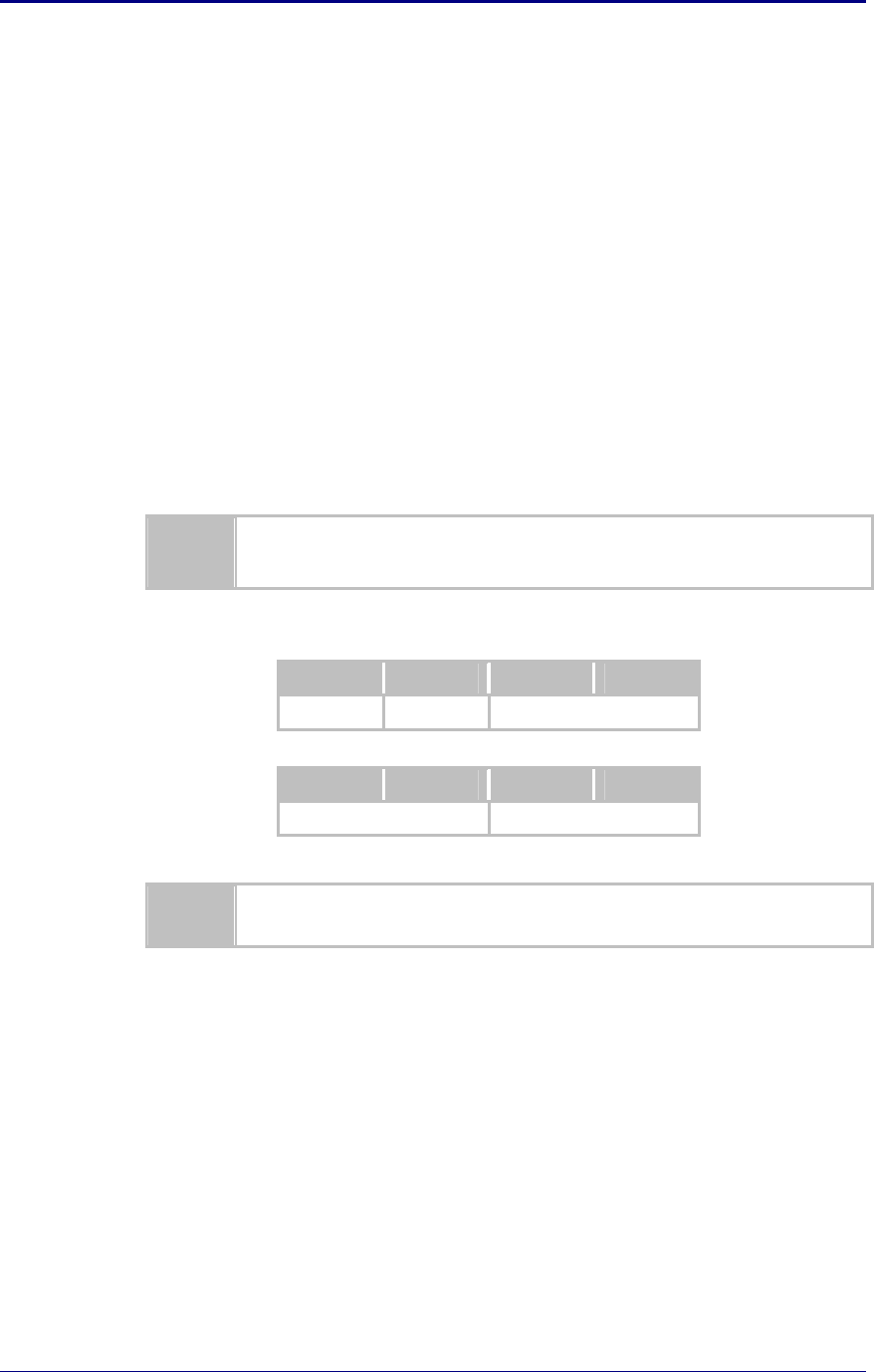
APPN-TT551 Databook B&B Electronics, Inc.
17
6.3 SPI Protocol
A SPI message is composed of a 4 byte header followed by 0 or more bytes of
data. The header data is full-duplex. That is, the TX message header is sent to
the Airborne Device Server module by the host at the same time that the RX
message header is sent to the host from the Airborne Device Server.
The TX message header consists of a Command (CMD) byte, followed by three
Parameter (PARM) bytes. They are described in the SPI Commands section 0
below.
The RX message header is shifted out as the first four bytes of an SPI message
regardless of the contents of the TX message header. The RX message header
consists of a RX Data Available field and a TX Buffer Available field. The RX
Data Available field indicates the number of data bytes the Device Server has
available for the host. The data can be received by the RXDATA command. The
TX Buffer Available field indicates how many data bytes the Device Server is
able to accept from the host. This data is to be shifted in by the host using the
TXDATA (Table 16) command. Both fields are 16 bit values and are stored in
little-endian format (Least significant byte first).
The /SPI_SEL signal must be de-asserted between successive SPI messages. The
messages will not be processed correctly if /SPI_SEL is held asserted across multiple
messages.
Table 13 - TX Message Header
0 1 2 3
CMD PARM1 PARM2
Table 14 - RX Message Header
0 1 2 3
RX Data Available TX Buffer Available
SPI data is transferred most significant bit first (msb).
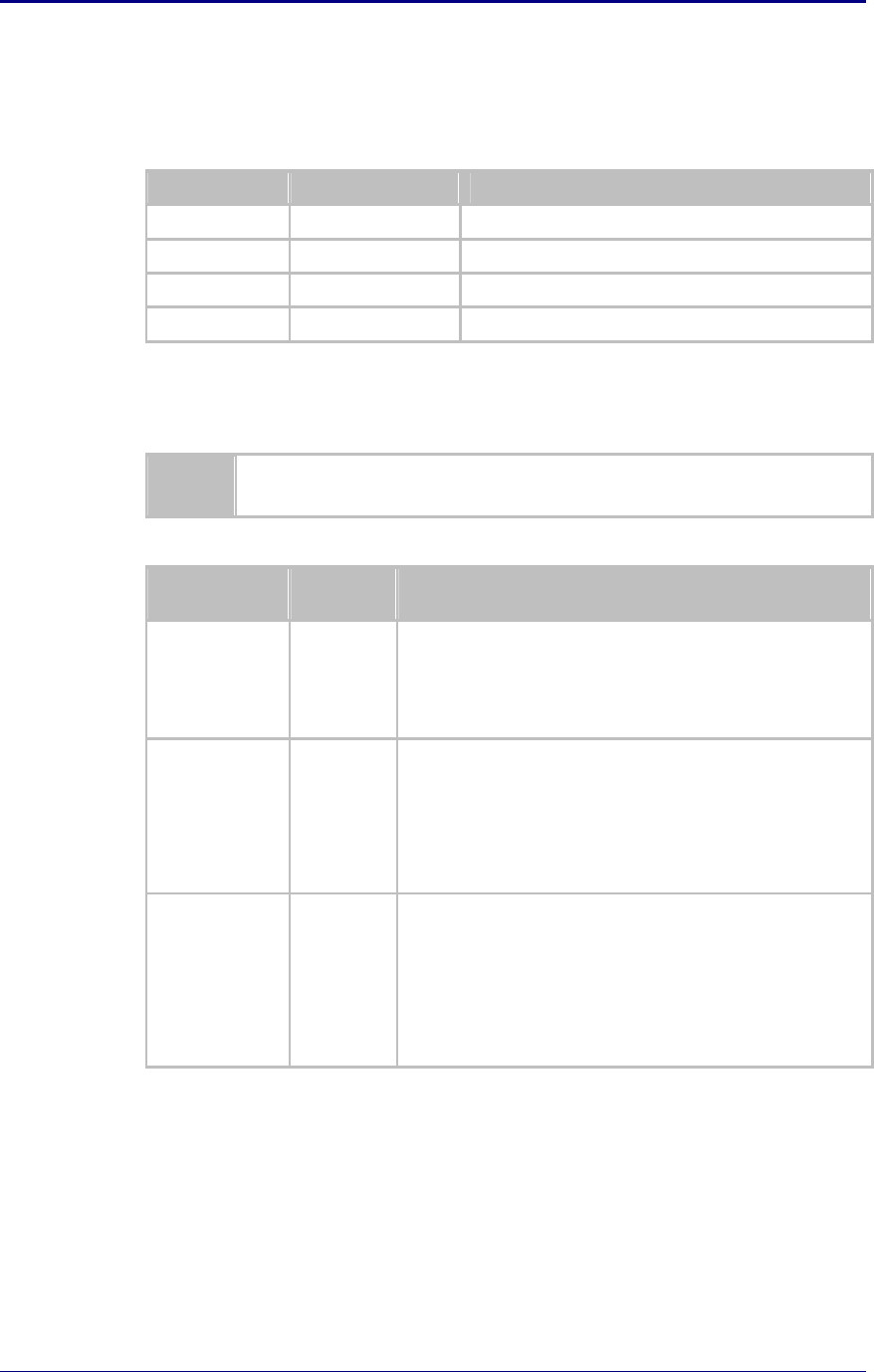
B&B Electronics, Inc. APPN-TT551 Databook
18
6.4 SPI Modes
The Airborne device supports the following four SPI modes. These are selectable
through the command line or web interfaces. The default mode is zero (0).
Table 15 - SPI Modes
SPI Mode Clock Idle Clocking Edge
0 Low High-Low (trailing edge)
1 Low Low-High (leading edge)
2 High Low-High (trailing edge)
3 High High-Low (leading edge)
6.5 SPI Commands
The following commands are available for use in the CMD message header.
Unused parameters should be set to zero.
Table 16 - SPI Command Description
Command
(Hex) Name Description
0x00 NOP The NOP command does nothing.
It is intended to be used when the host wants to simply retrieve
the RX Message Header without any other operation.
PARM1 and PARM2 are unused for this command and should
be set to zero.
0x04 BREAK The BREAK command will issue a break sequence to the
module.
It is analogous to the BREAK signal on a common UART. Use
this command to issue a BREAK if the esc-mode-serial brk
setting is configured in the module.
PARM1 and PARM2 are unused for this command and should
be set to zero.
0x08 TXINTCLR The TXINTCLR command will clear the TX interrupt.
Use this command when the module is issuing a TX interrupt
but the host has no more data to send. This is analogous to the
reset TX interrupt command on a common UART. The result of
this command is that the TX interrupt is cleared even though the
host is not writing more data to the module.
PARM1 and PARM2 are unused for this command and should
be set to zero.
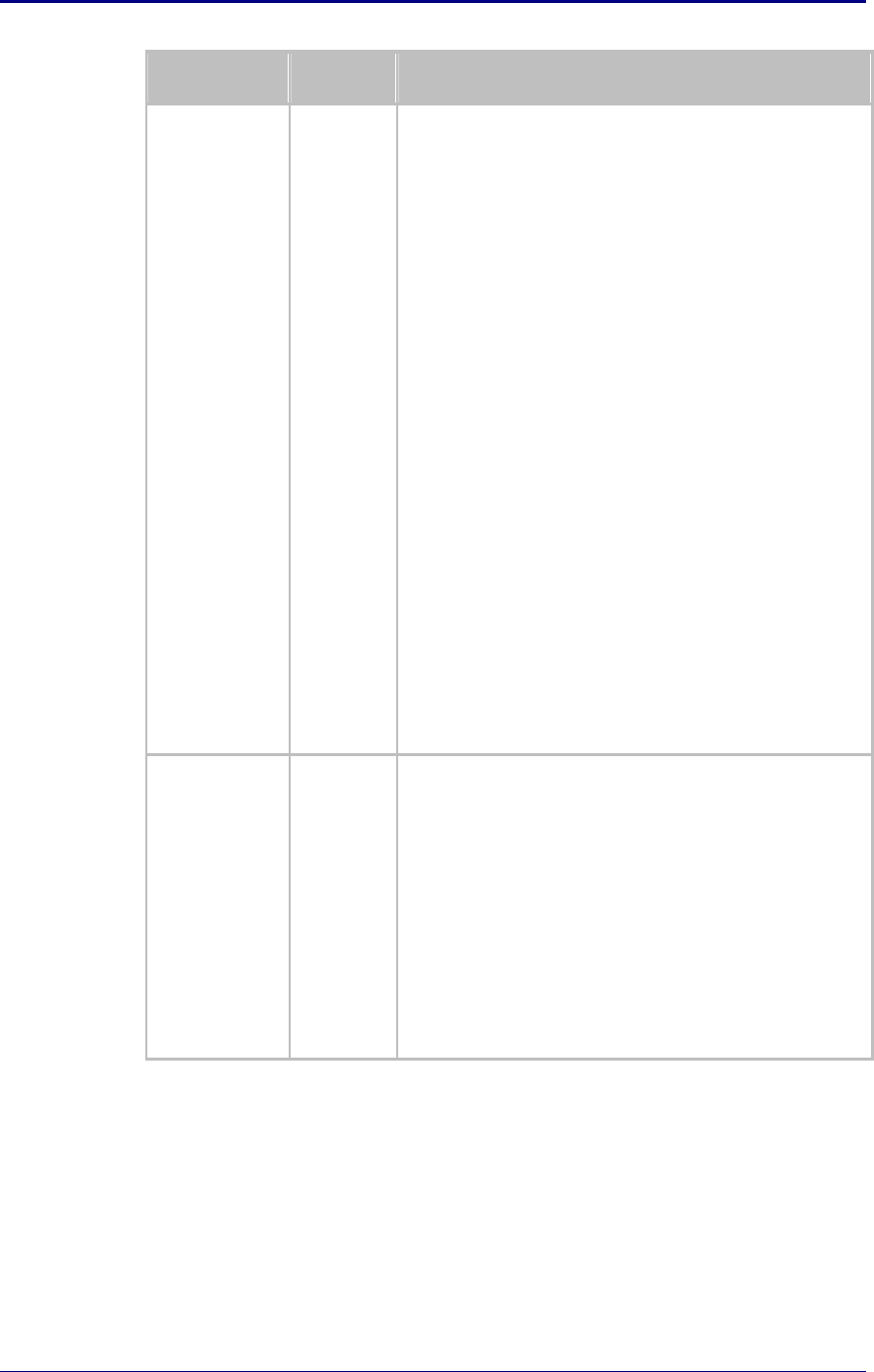
APPN-TT551 Databook B&B Electronics, Inc.
19
Command
(Hex) Name Description
0x10 INTENA The INTENA command will configure the specific interrupts to
be enabled from the module. For this command, the PARM1
field will define the interrupts to be enabled.
The definition of the PARM1 field for this command is a bit-mask
and is formatted as follows:
Bit 7 Interrupt Sense – Determines the asserted state of
the interrupt pin. If this bit is set to a 1, the interrupt
pin will be active high; otherwise the interrupt pin will
be active low. The module will use the setting of this
bit from the most recently issued INTENA command
to determine the Interrupt Sense.
Bit 1 TX Interrupt – If this bit is set to a 1, the interrupt
pin will be asserted when there is space available in
the TX buffer. The interrupt will be cleared when the
module has TX data to process from the host.
Alternately, the host can clear this interrupt by using
the TXINTCLR command if the host has no more data
to send.
Bit 0 RX Interrupt – If this bit is set to a 1, the interrupt
pin will be asserted when there is RX data available.
The interrupt will be cleared when the host has
received all the RX data available from the module.
All other bits of PARM1 are unused for this command
and should be set to zero.
PARM2 is unused for this command and should be set to zero.
For example, to enable TX interrupts with the interrupt pin
active high, use the SPI message 0x10 0x82 0x00 0x00. That
is, SPI command 0x10, PARM1 is 0x82, PARM2 is 0x0000.
Important: The INTENA command can only be used to enable
the specified interrupts. This command cannot be used to
disable specified interrupts by setting the corresponding
interrupt enable bits to zero in PARM1. The INTDIS command
must be used to disable the specified interrupts.
0x20 INTDIS The INTDIS command will configure the specific interrupts to be
disabled from the module. For this command, the PARM1 field
will define the interrupts to be disabled.
The definition of the PARM1 field for this command is a bit-mask
and is formatted as follows:
Bit 1 TX Interrupt – If this bit is set to a 1, The TX
interrupt function will be disabled.
Bit 0 RX Interrupt – If this bit is set to a 1, the RX
interrupt function will be disabled.
All other bits of PARM1 are unused for this command
and should be set to zero.
PARM2 is unused for this command and should be set to zero.
For example, to disable TX interrupts, use the SPI message
0x20 0x02 0x00 0x00. That is, SPI command 0x20, PARM1 is
0x02, PARM2 is 0x0000.

B&B Electronics, Inc. APPN-TT551 Databook
20
Command
(Hex) Name Description
0x40 TXDATA The TXDATA command is used to send data to the module to
be interpreted as commands if the module is in CLI mode, or to
be transmitted on the wireless link if the module has an active
data connection established.
The host may send at most the number of bytes indicated by the
TX Buffer Available field in the RX Message Header. The actual
number of bytes sent by the host is determined by the 16 bit
value in PARM2. The value in PARM2 is little-endian (least
significant byte first) and must be less than or equal to the
number in the TX Buffer Available field. Any bytes sent in
excess of this number will be ignored.
PARM1 is unused for this command and should be set to zero.
For example, to send the auth dpac dpac command, use the
SPI message 0x40 0x00 0x0F 0x00 0x61 0x75 0x74 0x68 0x20
0x64 0x70 0x61 0x63 0x20 0x64 0x70 0x61 0x63 0x0D. That
is, SPI command 0x40, PARM1 is 0x00, PARM2 is 0x000F,
followed by the text for auth dpac dpac.
0x80 RXDATA The RXDATA command is used to receive data from the
module. In CLI mode, this data will be the local echoing of the
commands issued to the module, as well as the command
responses generated by the module. If the module has an
active data connection established, this data will be the data
received on the wireless link.
The host may receive at most the number of bytes indicated by
the RX Data Available field in the RX Message Header. The
actual number of bytes received by the host is determined by
the 16 bit value in PARM2. The value in PARM2 is little-endian
(least significant byte first) and must be less than or equal to the
number in the RX Data Available field. If additional clock cycles
are sent to the module beyond this number, meaningless data
will be returned.
PARM1 is unused for this command and should be set to zero.
The TXDATA and RXDATA commands can be combined for full-duplex
operation. For example, a command byte of 0xC0 would be a TXDATA and
RXDATA command combined. The result of this command would be that the
module would accept data being shifted in as TX data, while at the same time,
RX data would be shifted out. In this case, the number of bytes transferred for
TXDATA must be equal to the number of bytes transferred for RXDATA. The
PARM2 parameter will indicate the number of bytes to be transferred for both the
TXDATA and RXDATA commands.

APPN-TT551 Databook B&B Electronics, Inc.
21
7.0 Antenna
The unit supports antenna connections through a Hirose U.FL connector (ANT1). It is
located on the top surface of the device next to the RF shielding.
Any antenna used with the system must be designed for operation within: the 2.4GHz
ISM band and must specifically support 2.412GHz to 2.482GHz for 802.11b/g operation.
They are required to have a VSWR of 2:1 maximum referenced to a 50Ω system
impedance.
7.1 Antenna Selection
The Airborne radio supports a number of antenna options, all of which require
connection to the U.FL connectors on the radio. The best antenna option will be
determined by a number of factors. These include the application, mechanical
construction and desired performance. Since the number of possible
combinations is enormous, we will review some of the more common solutions in
this section. Contact Technical Support for more specific answers if your
application is not covered during this discussion.
The available antenna connections include:
Host board mounted antenna
Host chassis mounted antenna
Embedded antenna
Location and performance also need to be considered. The following sections
discuss these factors.
7.2 Host Board Mounted Antenna
Host board mounting requires that an antenna connection be physically mounted
to the host system board. It also requires that the host board include a U.FL
connector to allow a U.FL to U.FL coaxial lead to connect from the radio to the
host board. It will then require 50Ω matched PCB traces to be routed from the
U.FL connector to the antenna mount.
There are several sources for the U.FL to U.FL coaxial cable. These include
Hirose, Sunridge and IPEX. Please contact B&B for further part numbers and
supply assistance.
This approach can simplify assembly, but it does require that the host system
configuration can accommodate an antenna location that is determined by the
host PCB. This approach also makes it harder to seal the enclosure.
Host board mounting also limits your choices of antenna. You must use
antennas that screw or press fit to the PCB mount connector. There are many
antenna connector types, but if you wish to utilize the FCC/IOC modular approval
the connector choice must comply with FCC regulations. These state that a non-
standard connector is required. For example, RP-TNC/RP-SMA are allowed,
and TNC/SMA are not.
7.3 Host Chassis Mounted Antenna
Host Chassis mounted antennas require no work on the host PCB. They use an
antenna type called ‘flying lead’. There are two types of flying leads. One
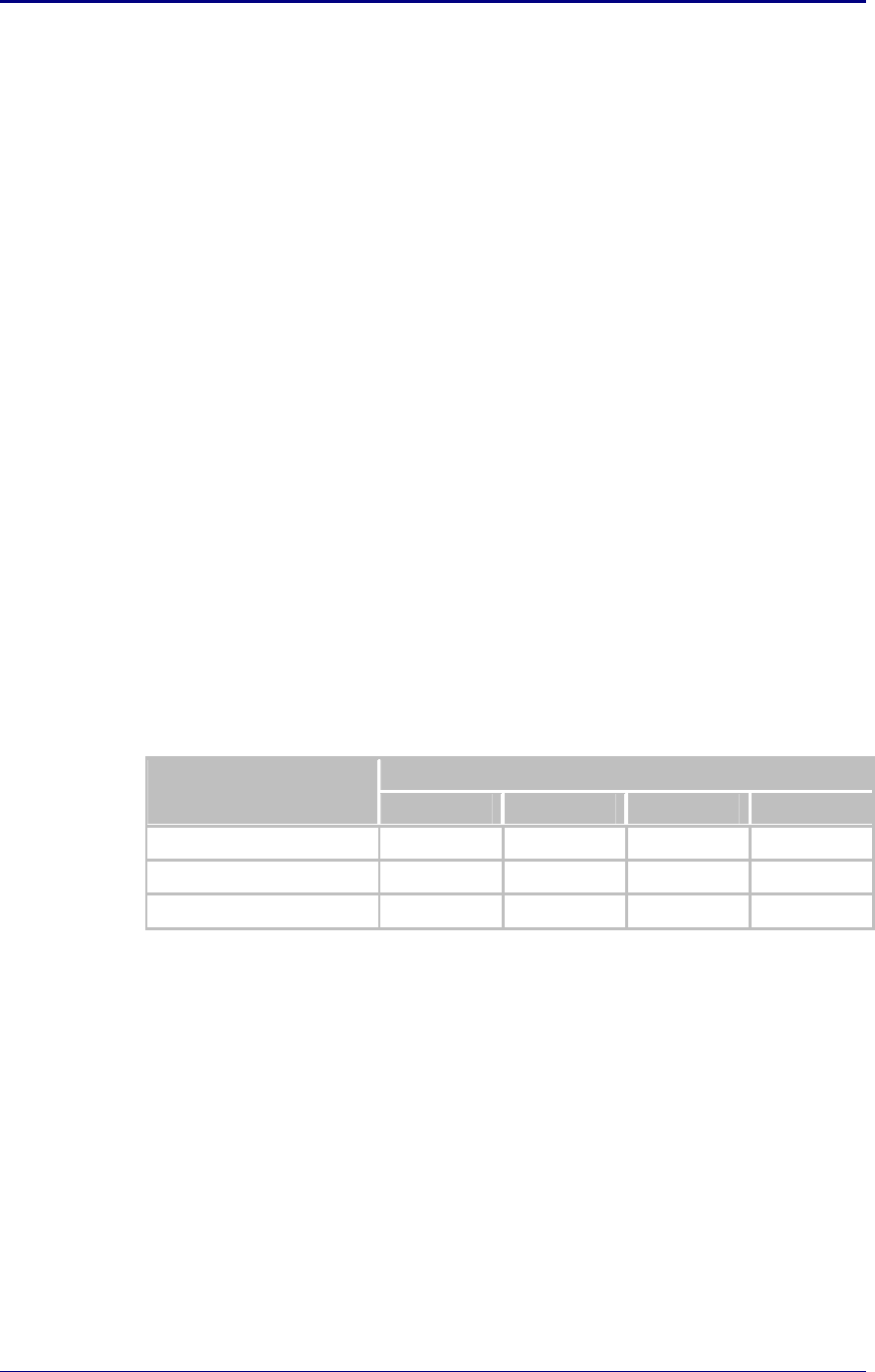
B&B Electronics, Inc. APPN-TT551 Databook
22
provides a bulkhead mounted antenna connector and the other provides a bulk
head mounted antenna. The type you choose will be determined by the
application.
A flying lead system connects a U.FL coaxial lead to the radio’s U.FL connector.
The other end of the coax is attached to either a bulkhead mounted antenna
connector or directly to an antenna that has an integrated bulkhead mount.
In either case, the use of host chassis mounting significantly reduces the antenna
system development effort. It provides for greater flexibility in antenna choice
and placement in the host system chassis.
When using the flying lead antenna (integrated bulk head mounting) there are no
connector choice restrictions for use with the FCC/IOC modular certification.
However if the flying lead connector is used, the same restrictions as identified
for the Host Mounted Antenna apply.
There are many suppliers of flying lead antenna and connectors. B&B’s Airborne
Antenna product line offers a range of antenna solutions.
7.4 Embedded Antenna
Embedded antennas can be the most interesting approach for M2M, industrial
and medical applications. Their small form factor and the absence of any external
mounting can make them very useful. But they will typically provide lower
performance than an external antenna. This does not make them unusable, but it
will impact the choice of antenna type and it will require more focus on antenna
placement.
The three main embedded antenna types are PCB embedded, chip (PCB
mounted) and flying lead. Each has its advantages and disadvantages (See
Table 17).
Table 17 - Embedded Antenna Options
Antenna Type
Features
Cost Size Availability Performance
PCB Embedded Lowest Largest Custom Poor
Chip Low Small Standard Poor
Flying Lead Low Small Standard Fair
PCB Embedded – This approach embeds an antenna design into the host PCB.
It is very common with add-in Wi-Fi cards (CF, PCMCIA, SDIO, etc.), as it
requires no external connections and has the lowest production cost. But the
lower production costs are offset by significant development costs and
diminished performance and flexibility.
Chip – The integration of a chip antenna is simple, and it requires a relatively
small footprint on the host system. But, like a PCB embedded antenna, there will
be limitations in flexibility and performance.
Many suppliers can provide chip antennas; many configuration and performance
options are available.
Flying Lead – Embedded flying lead antennas are similar to external flying lead
antennas. The difference is that the embedded antennas have smaller form
factors and provide a range of chassis and board mounting options. Embedded

APPN-TT551 Databook B&B Electronics, Inc.
23
flying lead antennas tend to provide more performance and flexibility than other
approaches, since the location of the antenna is not determined by the host PCB
design. The assembly of a system using embedded flying lead antennas may be
slightly more complex, as the antenna is not necessarily mounted on the host
PCBA.
7.5 Antenna Location
The importance of location cannot be over stressed. It can often be the
difference between the success and failure of a Wi-Fi implementation.
There are several factors that need to be considered when determining location:
Distance of Antenna from radio.
Location of host system.
− Proximity to RF blocking or absorbing materials.
− Proximity to potential noise or interference.
− Position relative to infrastructure (Access Points or Laptops).
Orientation of host system relative to infrastructure.
− Is it known?
− Is it static?
The following things need to be considered during the development process:
1. Minimize the distance between the radio and the location of the antenna. The
coaxial cable between the two impacts the Transmit Power and Receive
Sensitivity negatively. B&B recommends using 1.32-1.37mm outer diameter
U.FL coaxial cables.
2. Minimize the locations where metal surfaces come into contact or are close
to the location of the antenna.
3. Avoid locations where RF noise may occur, whether it is close to or
overlapping the ISM bands. This would include microwave ovens and
wireless telephone systems in the 2.4GHz frequency range.
4. Mount the antenna as high on the equipment as possible.
5. Locate the antenna where there is a minimum of obstruction between the
antenna and the location of the Access Points. Access Points are typically
located in the ceiling or high on walls.
6. Keep the main antenna’s polarization vertical, or in-line with the antenna of
the Access Points. 802.11 systems use vertical polarization and aligning both
transmit and receive antenna maximizes the link quality.
All of these factors will influence connection quality.
7.6 Performance
Performance is difficult to define. The appropriate metric changes with each
application, and may be a combination of parameters and application
requirements. The most important characteristic will normally be link quality. This
can be defined as the available bandwidth between the two devices. The lower
the link quality, the less likely it will be that the devices can communicate.
Measurement of link quality can be made in several ways; Bit Error Rate (BER),
Signal to Noise (SNR) ratio, Signal Strength and distortion. The link quality is
used by the radio to determine the link rate. In general, when the link quality for

B&B Electronics, Inc. APPN-TT551 Databook
24
a given link rate drops below a predefined limit the radio will drop to the next
lowest link rate and try to communicate at that rate.
The reverse is also true. If the radio observes good link quality at one rate it will
try to move up to the next rate to see if communication can still be sustained.
Note that for a given position the link quality improves as the link rate is reduced.
As the link rate drops, the radios’ Transmit power and Receive sensitivity
improve.
Looking at the link rate is an indirect way of assessing the quality of the link
between the device and an Access Point. You should strive to make the
communication quality as good as possible in order to support the best link rate.
But be careful not to over specify the link rate. Consider your application’s
bandwidth requirements and tailor your link rate to optimize the link quality. For
example, if the link quality for a location at 6Mb/s is better than it would be for
54Mb/s, and the application only needs 2Mb/s of data throughput, the 6Mb/s rate
would provide better link quality.
Radio performance is only one of the things that contribute to the link quality.
Other factors include the items discussed earlier and choices made regarding
overall antenna gain. The antenna gain contributes to the Equivalent Isotropically
Radiated Power (EIRP) of the system. This is called link margin, and it is part of
the overall measurement of the link quality.
Link Margin provides a measure of all the parts of the RF path that impact the
communications between two systems. The basic equation looks like this:
EIRP (dB) = TxP + TxA – TxC
Link Margin (dB) = EIRP – FPL + (RxS + RxA – RxC)
Where: TxP = Transmitter output power (dBm)
TxA = Transmitter antenna gain (dBi)
TxC = Transmitter to Antenna coax cable loss (dB)
FPL = Free Path Loss (dB)
RxS = Receiver receive sensitivity (dBm)
RxA = Receiver antenna gain (dBi)
RxC = Receiver to Antenna coax cable loss (dB)
This is a complex subject and we won’t try to cover it here. B&B’s technical
experts can help you if you need to explore it in more detail. But you should
understand that optimizing link quality involves a combination of hardware
selection, design choices and radio configuration.

APPN-TT551 Databook B&B Electronics, Inc.
25
8.0 RESET Function
For correct operation of the on-board Power-on RESET (POR) and internal RESET
controllers, the RESET pin on the module must obey the following timing and signal
conditions.
Figure 3 - Power on RESET Timing
Figure 4 - RESET Timing
Table 18 - RESET Timing
Symbol Parameter Min Typ Max Units
tPURST Valid VDD to RESET valid 200 ms
tRLRV RESET Valid to RESET Low 0 ms
tRPWI Valid VDD to Internal RESET completed 200 ms
tRPW RESET Pulse Width 100 µs
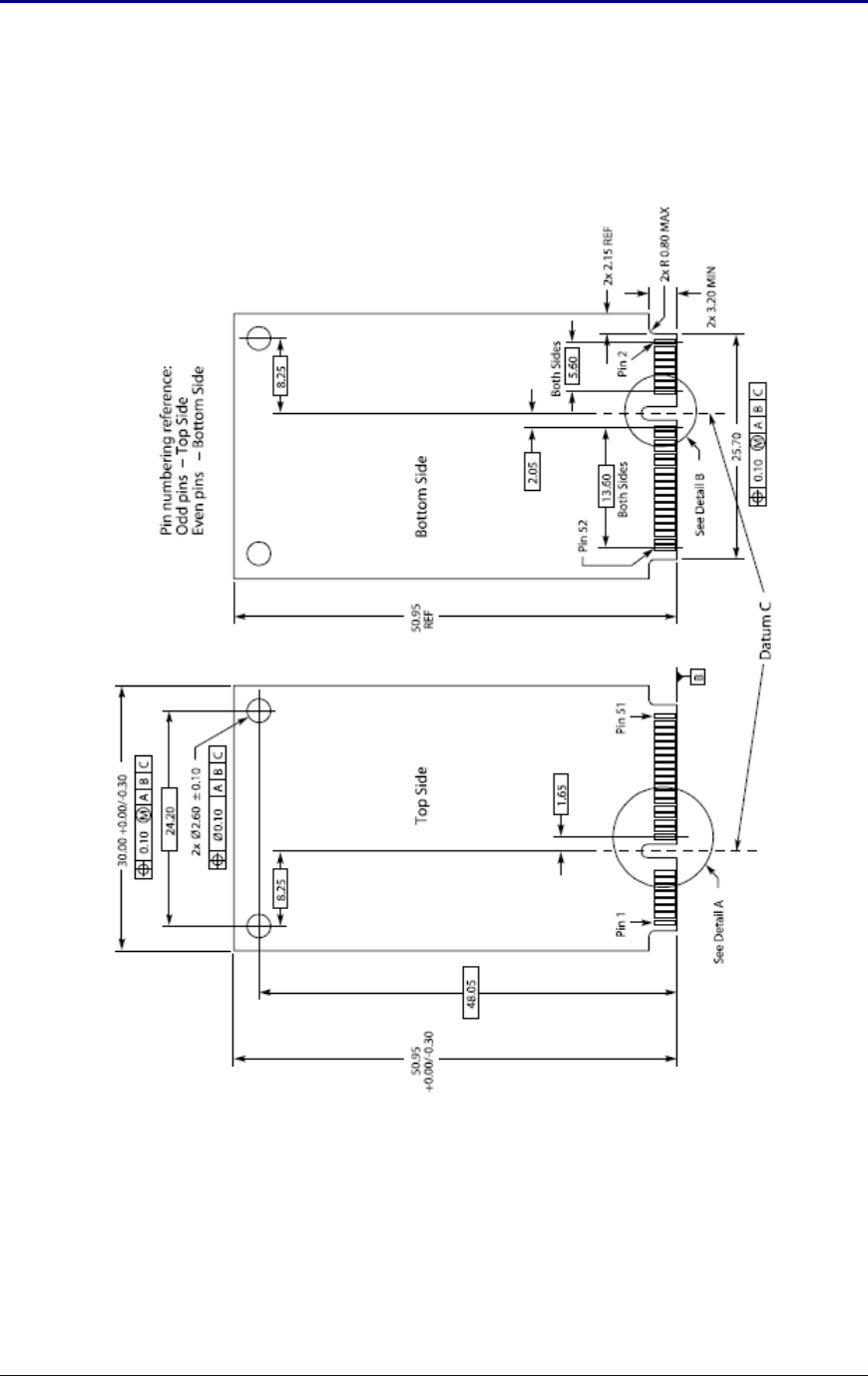
B&B Electronics, Inc. APPN-TT551 Databook
26
9.0 Mechanical Outline
Figure 5 – APPN-TT551 Mechanical Outline
Module Connector: 52 Pin Mini PCIe form factor
Board Connector: 0679105700 (Molex Inc)
Molex Inc: PCIe Mini card edgecard 52 pos
RF Connector: U.FL
Hirose: Ultra Small Surface Mount Coaxial Connector
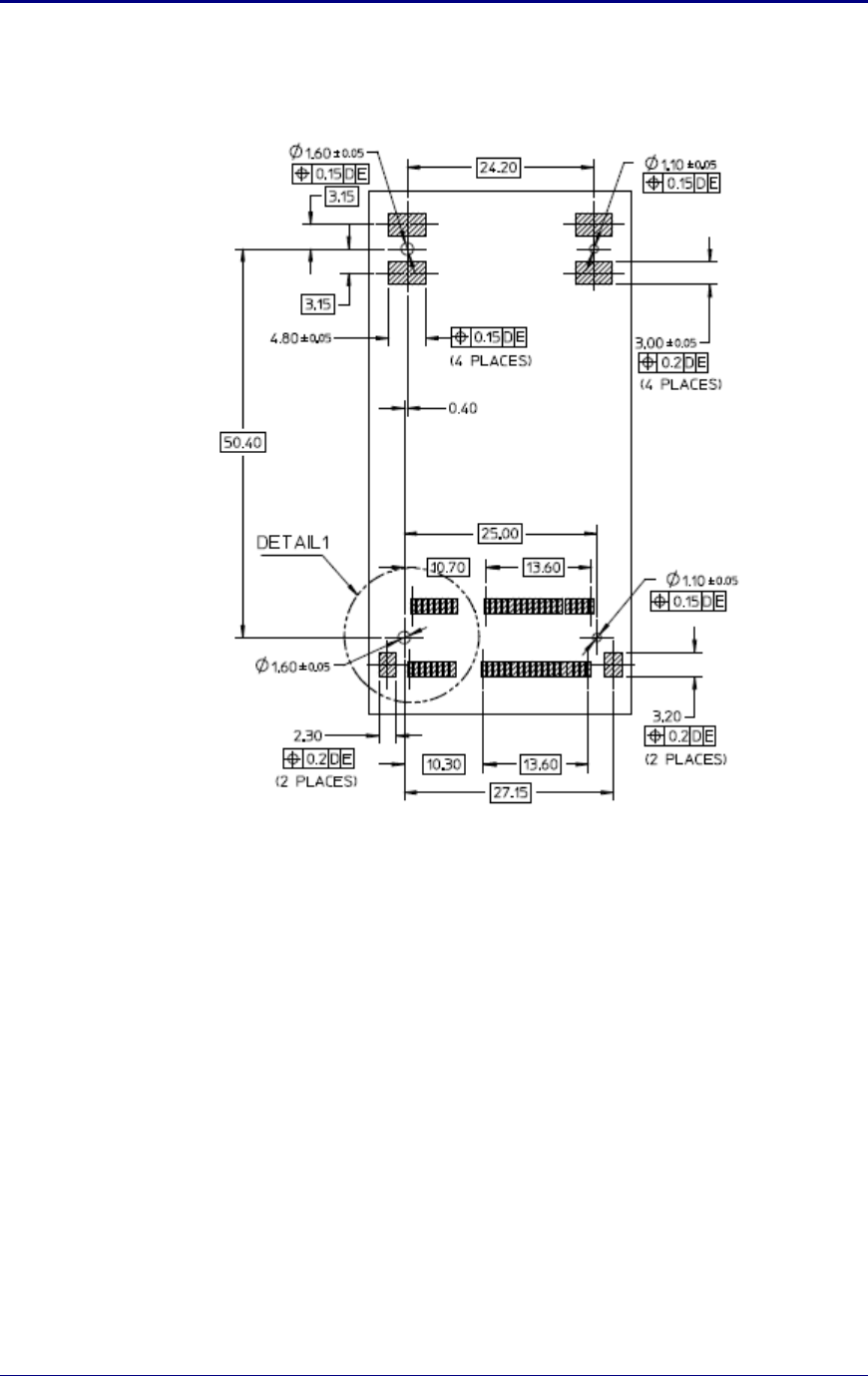
APPN-TT551 Databook B&B Electronics, Inc.
27
10.0 Recommended Footprint
Figure 6 - Recommended PCB Footprint
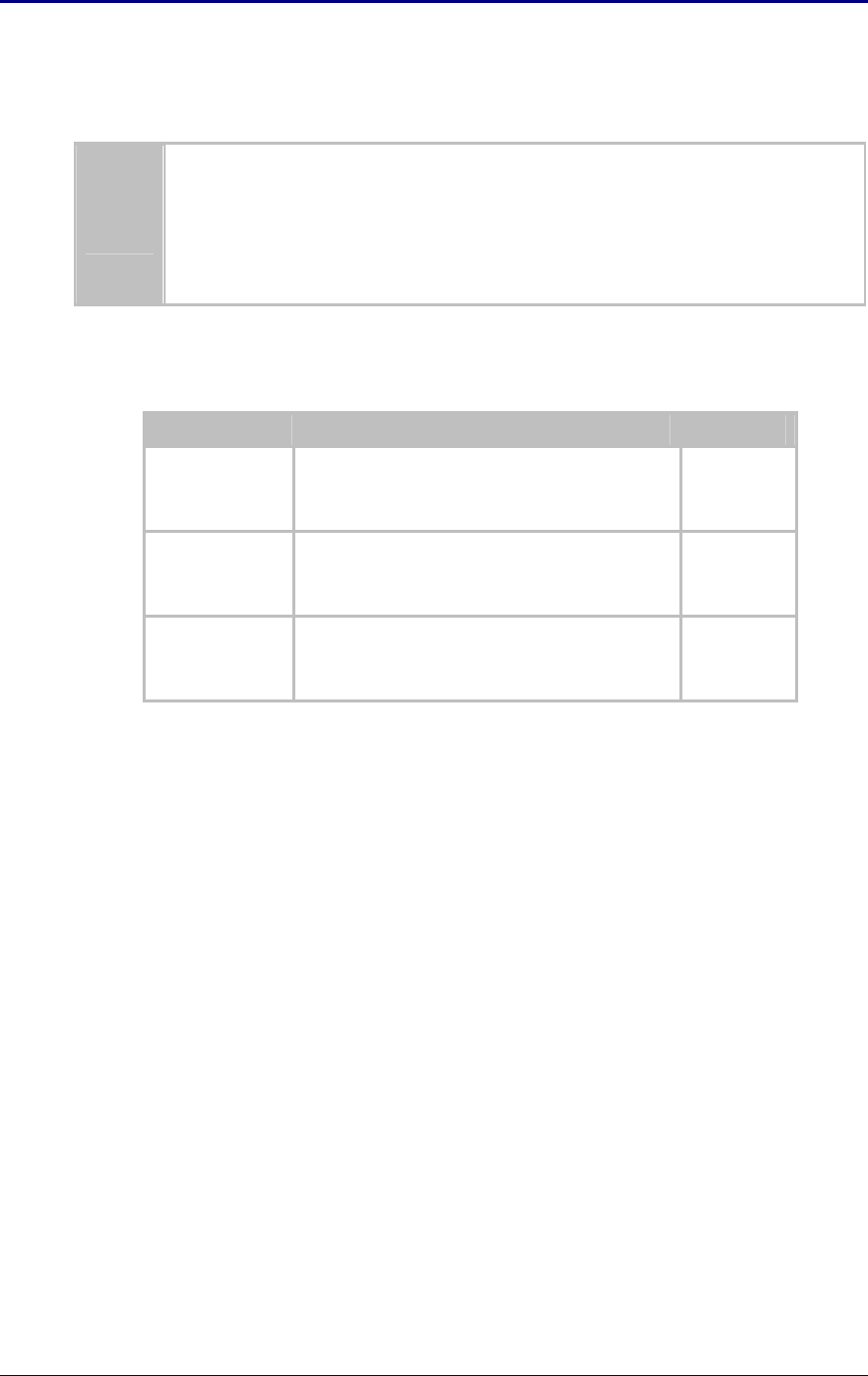
B&B Electronics, Inc. APPN-TT551 Databook
28
11.0 Regulatory Certification and Agency Approvals
IMPORTANT!
It is required that the following section be read and understood
before use of the B&B Airborne™ device is permitted.
Use of approved antenna is required for compliance to FCC and IC
regulations.
The unit complies with the following agency approvals:
Table 19 - Regulatory Approvals
Country Standard Status
North America
(US & Canada)
FCC Part 15
Sec. 15.107, 15.109, 15.207, 15.209, 15.247
Modular Approval
Pending
Europe
CISPR 16-1 :1993
ETSI EN 300 328 Part 1 V1.2.2 (2000-07)
ETSI EN 300 328 Part 2 V1.1.1 (2000-07)
Pending
Japan
ARIB STD-T71 v1.0, 14 (Dec 2000)
ARIB RCR STD-T33 (June 19, 1997)
ARIB STD-T66 v2.0 (March 28, 2002)
Pending
11.1 FCC Statement
This equipment has been tested and found to comply with Part 15 of the FCC
Rules. Operation is subject to the following two conditions:
1. This device may not cause harmful interference, and
2. This device must accept any interference received, including interference
that may cause undesired operation.
This equipment generates, uses, and can radiate radio frequency energy and if
not installed and used in accordance with the instructions, may cause harmful
interference to radio communications. However, there is no guarantee that
interference will not occur in a particular installation. If this equipment does cause
harmful interference to radio or television reception, which can be determined by
turning the equipment off and on, the user is encouraged to try to correct the
interference by one or more of the following measures:
Reorient or relocate the receiving antenna.
Increase the separation between the equipment and receiver.
Connect the equipment to an outlet on a circuit different from that to which the
receiver is connected.
Consult the dealer or an experienced radio/TV technician for assistance.
Changes or modifications not expressly approved by the party responsible for
compliance could void the user’s authority to operate the equipment.

APPN-TT551 Databook B&B Electronics, Inc.
29
11.2 FCC RF Exposure Statement
To comply with FCC/IC RF exposure compliance requirements, the antenna
used for this transmitter must be installed to provide a separation distance of at
least 20 cm from all persons and must not be co-located or operate in
conjunction with any other antenna or transmitter.
As such, the radio component of this device is intended only for OEM integrators
under the following two conditions:
• The antenna must be installed such that 20 cm is maintained between
the antenna and users.
• The transmitter module may not be co-located with any other transmitter
or antenna.
As long as the two conditions above are met, further transmitter testing will not
be required. However, the OEM integrator is still responsible for testing their end
product for any additional compliance requirements required with this module
installed (e.g., digital device emissions, PC peripheral requirements).
In the event that these conditions cannot be met (for example, co-location with
another transmitter), then the FCC authorization is no longer considered valid
and the FCC ID cannot be used on the final product. In these circumstances, the
OEM integrator will be responsible for re-evaluating the end product (including
the transmitter) and obtaining a separate FCC authorization.
11.3 Information for Canadian Users (IC Notice)
This device has been designed to operate with an antenna having a maximum
gain of 3.8dBi in the 2.4GHz band. An antenna having a higher gain is strictly
prohibited per regulations of Industry Canada. The required antenna impedance
is 50Ω. Only approved antenna may be used with this equipment.
Under Industry Canada regulations, this radio transmitter may only operate using
an antenna of a type and maximum (or lesser) gain approved for the transmitter
by Industry Canada. To reduce potential radio interference to other users, the
antenna type and its gain should be so chosen that the Equivalent Isotropically
Radiated Power (EIRP) is not more than required for successful communication.
Conformément à la réglementation d'Industrie Canada, le présent émetteur radio
peut fonctionner avec une antenne d'un type et d'un gain maximal (ou inférieur)
approuvé pour l'émetteur par Industrie Canada. Dans le but de réduire les
risques de brouillage radioélectrique à l'intention des autres utilisateurs, il faut
choisir le type d'antenne et son gain de sorte que la puissance isotrope rayonnée
équivalente (p.i.r.e.) ne dépasse pas l'intensité nécessaire à l'établissement
d'une communication satisfaisante.
This radio transmitter (3913A-APPN551) has been approved by Industry Canada
to operate with the antenna types listed below with the maximum permissible
gain and required antenna impedance for each antenna type indicated. Antenna
types not included in this list, having a gain greater than the maximum gain
indicated for that type, are strictly prohibited for use with this device.
Cet émetteur radio (3913A-APPN551) a été approuvé par Industrie Canada pour
fonctionner avec les types d'antennes énumérés ci-dessous avec le gain
maximal admissible et l'impédance d'antenne requise pour chaque type
d'antenne indiqué. Types d'antennes ne figurent pas dans cette liste, ayant un

B&B Electronics, Inc. APPN-TT551 Databook
30
gain supérieur au gain maximum indiqué pour ce type, sont strictement interdites
pour une utilisation avec cet appareil.
The following is a list of the Antenna’s approved to work with this transmitter,
please contact your B&B representative if you have any questions.
MFG P/N Max. Gain 2.4G
(dBi) Impedance (Ω
ΩΩ
Ω)
Taoglas GW.71.5153 3.8 50
The installer of this radio equipment must ensure that the antenna is located or
pointed such that it does not emit RF field in excess of Health Canada limits for
the general population; consult Safety Code 6, obtainable from Health Canada’s
website www.hc-sc.gc.ca.
This Device complies with Industry Canada license-exempt RSS
standard(s).Operation is subject to the following two conditions: (1) this device
may not cause interference, and (2) this device must accept any interference,
including interference that may cause undesired operation of the device.
Le présent appareil est conforme aux CNR d'Industrie Canada applicables aux
appareils radio exempts de licence. L'exploitation est autorisée aux deux
conditions suivantes : (1) l'appareil ne doit pas produire de brouillage, et (2)
l'utilisateur de l'appareil doit accepter tout brouillage radioélectrique subi, même
si le brouillage est susceptible d'en compromettre le fonctionnement.
11.4 FCC/IC Modular Approval
This document describes the Airborne FCC modular approval and the guidelines
for use as outlined in FCC Public Notice (DA 00-1407).
The APPN-TT551 is covered by the following modular grants:
Table 20 - Modular Grant Numbers
Country Standard Grant
North America (US)
FCC Part 15
Sec. 15.107, 15.109, 15.207, 15.209, 15.247
Modular Approval
F4AAPPN551
Canada RSS 210
Modular Approval 3913A-APPN551
By providing FCC modular approval on the Airborne module, the customers are
relieved of any need to perform FCC part15 subpart C Intentional Radiator
testing and certification, except where they wish to use an antenna that is not
already certified.
B&B supports a group of pre-approved antenna; use of one of these antennas
eliminates the need to do any further subpart C testing or certification. If an
antenna is not on the list, it is a simple process to add it to the pre-approved list
without having to complete a full set of emissions testing. Please contact B&B
Technical support for details of our qualification processes.
Please note that as part of the FCC requirements for the use of the modular
approval, the installation of any antenna must require a professional installer.
This is to prevent any non-authorized antenna being used with the radio. There

APPN-TT551 Databook B&B Electronics, Inc.
31
are ways to support this requirement but the most popular is to utilize a non-
standard antenna connector, this designation includes the reverse polarity
versions of the most popular RF antenna types (SMA, TNC, etc.). For more
details please contact B&B.
The following documents are associated with this applications note:
FCC Part 15 – Radio Frequency Devices
FCC Public Notice – DA 00-1407 (June 26th, 2000)
B&B recommends that during the integration of the radio, into the customers
system, that any design guidelines be followed. Please contact B&B Technical
Support if you have any concerns regarding the hardware integration.
Contact B&B Technical support for a copy of the FCC and IOC grant certificates,
the test reports and updated approved antenna list.
11.5 End Product Labeling
This transmitter module is authorized only for use in devices where the antenna
may be installed such that 20 cm may be maintained between the antenna and
users. The final end product must be labeled in a visible area with the FCC and
Industry of Canada Grant numbers as shown in Table 20.
The following label or similar must be placed on the outside of the product,
utilizing the Airborne™ device, whenever physically possible:
Figure 7 - Full FCC/IC Label
Figure 8 - Minimum FCC/IC Label
When the device is so small or for such use that it is not practicable to place the
label shown in Figure 7, the label shown in Figure 8 may be used, however the
information required shall also be placed in a prominent location in the instruction
manual or pamphlet supplied to the user. Alternatively, the required information
shown in Figure 7 shall be placed on the container in which the device is
marketed.
In all cases the FCC and IC identifiers must be displayed on the device in which
the module is installed.

B&B Electronics, Inc. APPN-TT551 Databook
32
11.6 Regulatory Test Mode Support
The Airborne Device Server includes support for all FCC, IC and ETSI test
modes required to perform regulatory compliance testing on the module, please
contact B&B Technical Support for details on enabling and using these modes.

APPN-TT551 Databook B&B Electronics, Inc.
33
12.0 Physical & Environmental Approvals
The device has passed the following primary physical and environmental tests. The test
methods referenced are defined in SAE J1455 Aug1994.
Table 21 - Mechanical Approvals
Test Reference Conditions
Temperature Range
(Operational) Table 1B, Type 2b -40°C to +85°C
Temperature Range (Non-
Operational) -40°C to +85°C
Humidity Sect 4.2.3 0-95%RH @ 38°C condensing
Fig 4a – 8 hours active humidity cycle
Altitude Sect 4.8
Operational: 0-12,000ft (62 KPa absolute pressure)
Non-operational: 0-40,000ft (18.6 KPa absolute
pressure)
Test reports are available from B&B Technical Support. Please contact directly for the
latest documentation.